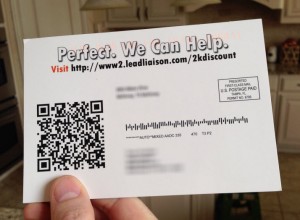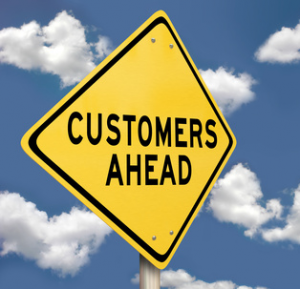Direct Mail with Marketing Automation
 We recently added the ability to send direct mail with marketing automation using Lead Liaison. We’re genuinely excited about this new marketing channel that our customer base can take advantage of. Designing our first direct mail campaign was easy. In this post we’ll talk about how simple it was to put together a direct mail campaign using Lead Liaison’s marketing automation software.
We recently added the ability to send direct mail with marketing automation using Lead Liaison. We’re genuinely excited about this new marketing channel that our customer base can take advantage of. Designing our first direct mail campaign was easy. In this post we’ll talk about how simple it was to put together a direct mail campaign using Lead Liaison’s marketing automation software.
Background on Direct Mail
B2B marketing typically requires 5 to 7 touches before a prospect buys from a provider. Why? They want to build trust, build the relationship and know you’re not a fly-by-night vendor blasting out communications hoping you’ll respond to the first thing they see. Using all of those 5 to 7 touches on phone calls or emails could get old, really fast. Enter direct mail.
According to the Direct Marketing Association, typical response rates are 4.4% for direct mail (overall)
While response rates are high, so are conversions for new customers.
The CMO Council reports direct mail has the highest rate of success in new customer acquisition at 34% compared with other marketing channels.
It’s time we start thinking about integrating direct mail with marketing automation.
How We Did It

Adding direct mail to our marketing automation campaign was easy. Here are the steps we took to launch our campaign.
- Created a template in Photoshop. This took us about an hour to do. Alternatively, you could use pre-made templates from our partner, Direct Mail Manager. They’ve got 100s of pre-made cards to choose from.
- We put a QR code on the back of the postcard that linked to a landing page we built in Lead Liaison. When the recipient gets the card they scan it with their smart phone which loads the landing page along with an attractive offer.
- We deposited $1.04 into our account at Direct Mail Manager. Yes, only about a buck! Each card cost $.52 and we sent one to our Product Manager and one to an Account Manager. You can deposit as little as $.52 into your Direct Mail Manager Account.
- We created a Webhook in Lead Liaison.
- We added the Webhook as an action in our marketing campaign workflow.
- Boom! Within three (3) days the postcard showed up in the mail.










